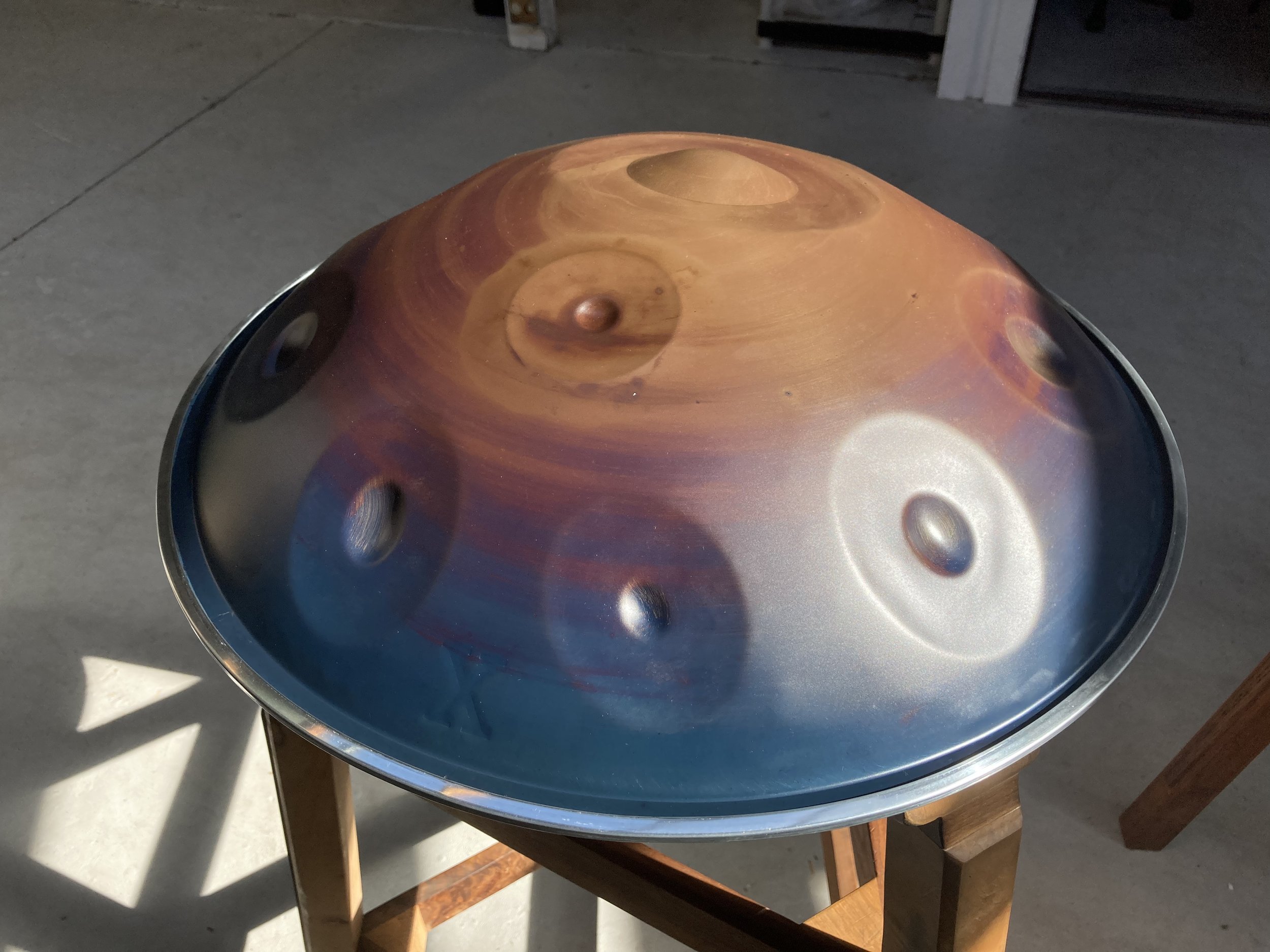The Xenith Expanse - Exploring Alternative Layouts
Designing a handpan with an extended scale can be quite the challenge. Incorrect note alignment and awkward note placement can yield instruments that are inherently hard to play with unsolvable tuning issues. I have always been hesitant to explore the arena of bottom notes and alternative layouts due to the concerns above. With that said, I’ve decided to dip my toe into the turbulent and challenging waters of 10+ note handpan scales.
One distinction to make—traditionally, the number of notes on a handpan was always how many were in the tone circle around the center note. At that point in time, alternative layouts didn’t exist so it made sense to note include the center note in counting. An instrument with 7 notes plus the center note was a 7 noter etc. Once alternative layouts were introduced it made more sense to count all the notes, including the center. So a La Sirena11 means there’s a total of 11 notes on the instrument. Brackets [like this] are often used to signify bottom notes. Its also a safe assumption that the notes are always listed low to high.
Lets use this F# Equinox 13 as a case study. F# Equinox13 - [C#] [D] F#/ [G#] A C# D E F# G# A C# F#. Equinox builds off of a very popular scale, Integral. In this case, it would be C# Integral. The addition of the low A means that the inherently C#/F# Minor feel can be flipped to A Major giving the player some great melodic options. F#/A C# D E F# G# A C#. Adding the high F# allows for a full triple octave completion, and unusual element in handpans.
I wanted to build off of this concept. By adding the low D, the whole A Major/D Major nested scale comes out. [D] A C# D E F# G# A C#
Adding the low C# and G# means there is also a nested C# Kurd. [C#] [G#] A C# D E F# G# A C#
We see that [C#] [D] [G#] are bottom notes. In an effort to keep this playability high, I wanted the notes to alternate while ascending the scale, as it would with a traditional layout. This meant that the C# would have to be on the right side. Then D on the left, then the center F#, then G# on the left, to lead the right hand to start on the low A, insuring the traditional right/left ascension on the top shell. Once that was sorted out, then it was time to check note alignment with the bottom notes and their neighboring top notes. Thankfully, there were no major issues there. Lastly, was to scoot the center note off center to make room for the ‘mutant’ F#5. Below is a quick layout sketch I made while thinking this layout through.
While a challenge, making the Xenith Expanse has left me inspired. I always say that this artform will take you as deep as you want to go and extended scales and alternative layouts are a great example of just how deep it goes!



